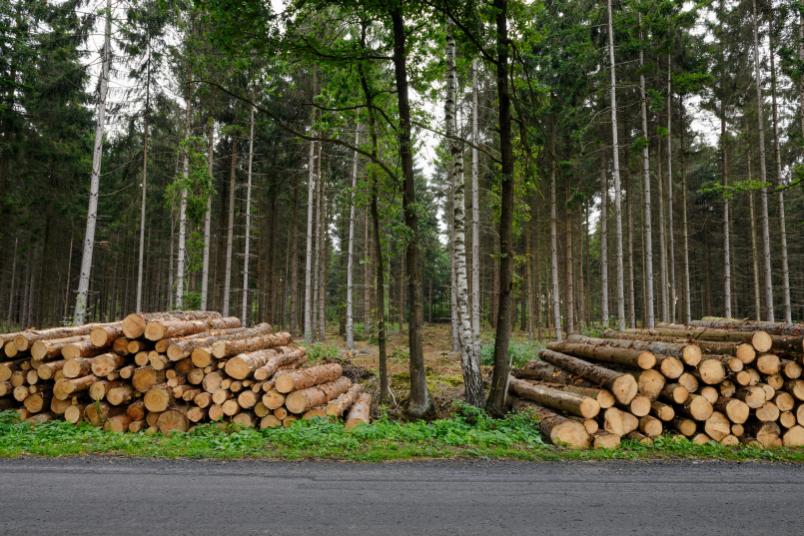
Building industry
Building with wood to protect the climate
A ban on plastics, energy system transformation, new transport concepts – political measures are implemented in a number of areas in order to protect the climate.
Typically, the first thing that comes to mind when people talk about a wooden house are timber-framed houses or holiday cottages, rather than state-of-the-art construction methods. And yet, promoting the use of wood as a building material would certainly be in the interest of climate protection. After all, the world is experiencing a construction boom, and concrete production is causing a lot of CO2 emissions. Wood, on the other hand, is not only a renewable raw material; trees also act as carbon storage, as they absorb and store CO2 from the atmosphere.
However, only 18 per cent of buildings in Germany are currently constructed from wood. The climate balance of the building sector could be much better if this quota were to be increased, as has been demonstrated by Professor Annette Hafner and her team from the Chair for Resource Efficient Building at RUB. In a study published in 2017, the engineers calculated how much CO2 could be saved if 55 per cent of single-family homes and 15 per cent of all apartment buildings were built from wood between 2016 and 2030. The result amounts to 23.9 million tonnes of CO2.
A tool for local authorities
It is not least because of these figures that Annette Hafner believes it makes sense for wood to become more important as a building material. “It would pay off for climate protection reasons,” she points out. However, she explains that it is not enough to decide at national level to promote timber construction. “The local authorities must be able to implement this plan,” says Hafner. To help them, her team, together with the company Disy Informationssysteme, is developing a tool that allows individual municipalities to estimate how much greenhouse gas they would save if they increased the proportion of wooden houses in their area.
The project “Holzbau-GIS: Reducing greenhouse gas by building and refurbishing with wood” will run until the end of January 2022, funded by the Federal Ministry of the Environment and the Federal Ministry of Agriculture. The abbreviation GIS in the project title stands for geoinformation system, as this is the basis for the tool. It provides a detailed digital plan of all buildings in a municipality that can be scanned street by street for their climate optimisation potential. Not only the type of building is taken into account, for example whether it is a single-family house, but also the age of the houses and thus their redevelopment requirements. The town of Menden in the Sauerland region serves as an example for the development of the tool.
Calculating CO2 reduction potential
“You can specify whether the redevelopment or new construction of certain urban areas should be wood-based or not, and you are told how much CO2 you would save,” explains Annette Hafner. But Holzbau-GIS also provides information about the wood resources that the forests would provide to the surrounding area. In future, this should enable local authorities to independently assess whether timber construction would be feasible and how much greenhouse gas emissions they would save.